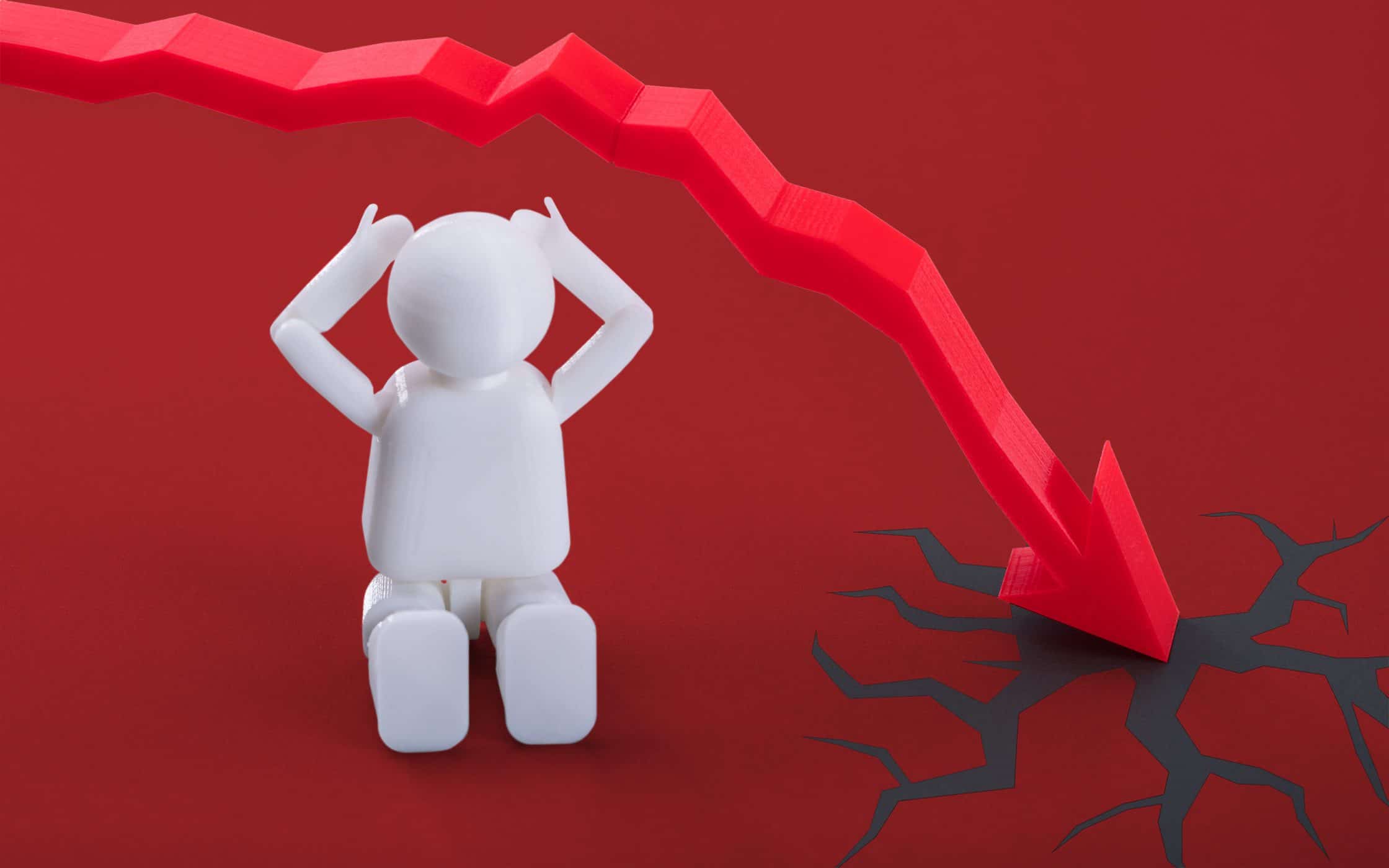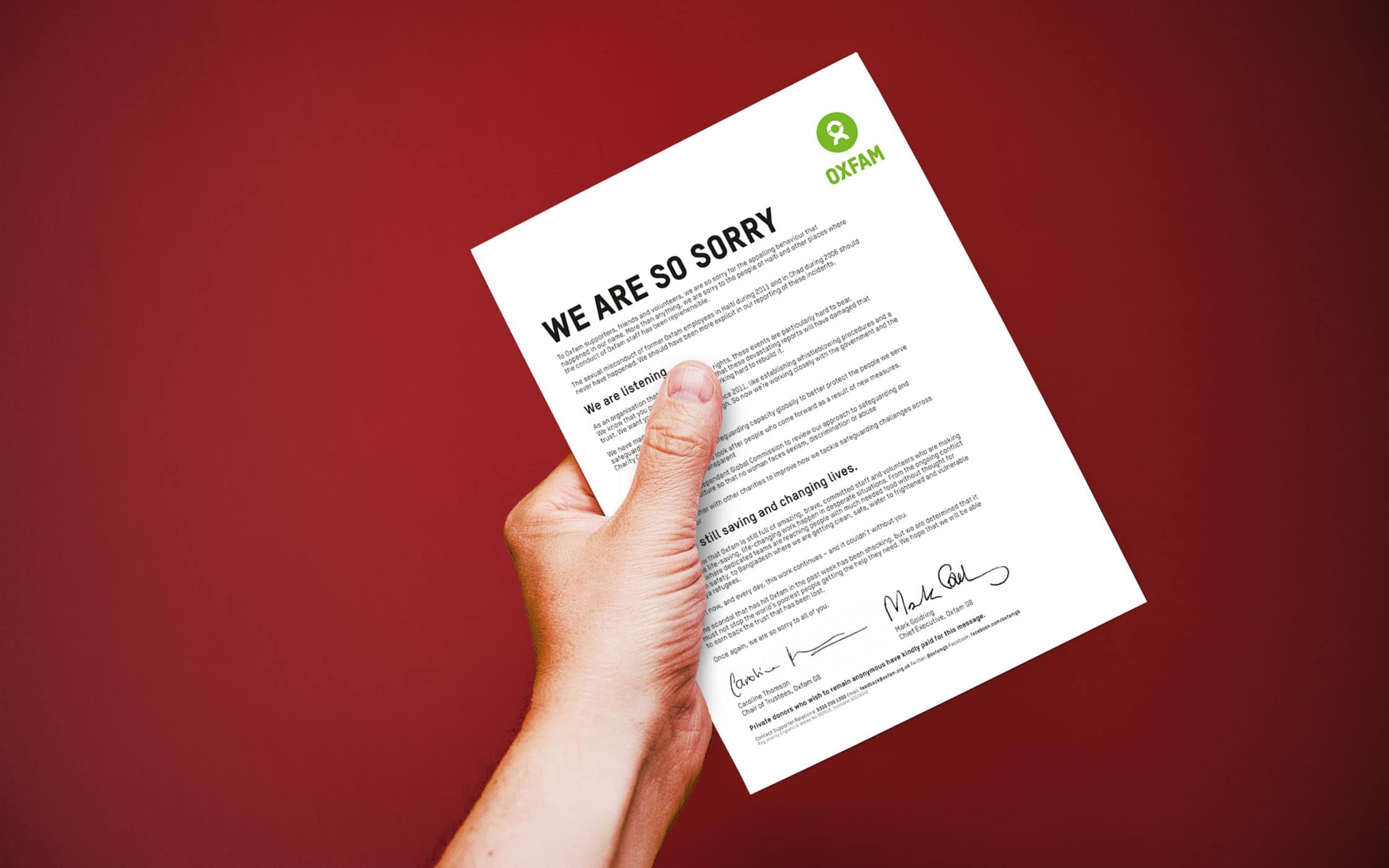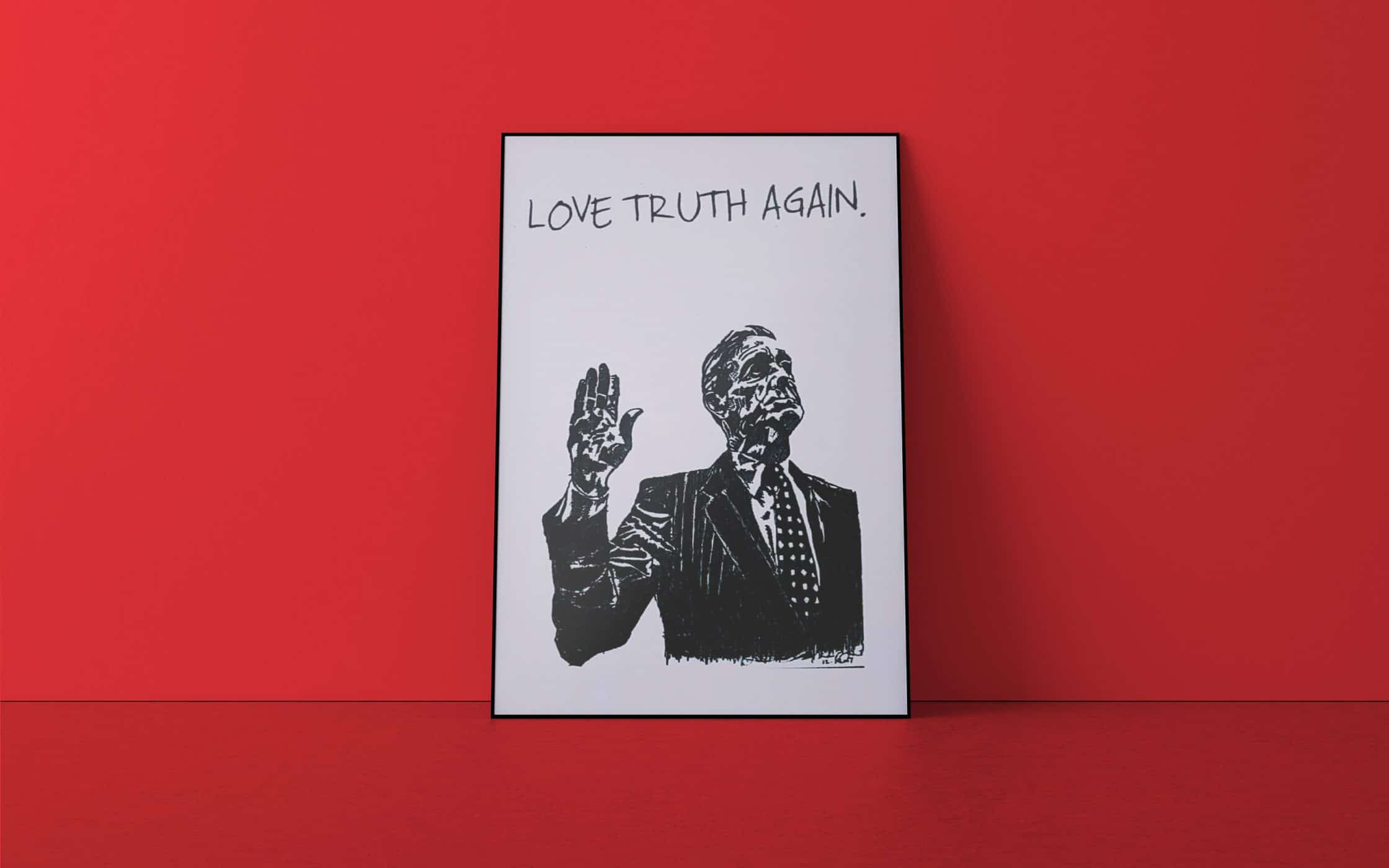Tips for tarnished brands: How to restore your sparkle after a brand crisis

Brand reputation is a complicated thing.
When Warren Buffet told the world that it takes 20 years to build an identity, and only 5 minutes to destroy it, he wasn’t exaggerating. The truth is that in today’s highly-connected digital world, everything from a poorly timed Tweet, to badly chosen brand name can do irreparable damage to your company.
Whether you build your reputation on a commitment to exceptional customer service, using luxury materials in all of your products, or you simply have a personality that your customers resonate with, your identity is something that evolves with years of work. It takes time, focus and effort to not only establish an image for your business but convince your customers of its authenticity.
Unfortunately, any action or statement that goes against your brand promise can then send your customers spiralling into cynicism and confusion. In fact, studies place brand reputation damage at the top of the list of risks that today’s global companies face.
That’s because these days, consumers are naturally suspicious of the organisations they buy from. They’ve moved beyond simply buying products because they look good or cost less. People choose which brands they want to support by championing the values that underpin that corporate entity, whether it’s a commitment to quality, or simply a good CSR strategy.
The fact that it’s impossible to please everyone ensures that most companies will face a brand crisis at least once in their lifespan. The key to success is making sure that you have a plan to spruce up your tarnished brand before it corrodes beyond repair.

Brand crisis management: How to protect your brand reputation
Hope for the best, plan for the worst.
That might sound like a pessimistic motto, but it’s a good one to live by in an unpredictable marketplace. Every brand needs to prepare for a moment when something could go wrong with their company. After all, now that we can all see the latest breaking news on our Twitter feeds while it’s still unfolding, companies in crisis don’t have time to dither over what they need to do next.
In particularly bad cases, a lack of brand crisis management could lead to investors pulling out of your business, suppliers leaving you in the lurch and even the loss of critical market share. While you can’t necessarily prevent everything that might go wrong with your brand reputation, you can mitigate the impact of an impending crisis by having a plan of action in place. The more prepared you are, the less you’ll need to scramble at the last minute to patch up your identity and regain customer trust. Remember, when building a solid brand crisis management strategy:
1. Be proactive with your digital presence
One of the things that makes a brand such a powerful asset for any company, is the fact that it can defend you against a sudden crisis. Think of it this way. Imagine someone in your company makes a mistake and posts a poorly-worded comment on Twitter indicating that your brand doesn’t care about the environment. Your customers will be much more likely to accept the idea that it was just bad wording if you’ve already built your reputation through the right marketing and collaborations with green charities in your area.
Having a strong and active brand that’s devoted to a specific set of values helps to establish a foundation of credibility and transparency that will serve you well when crisis happens. Additionally, when you’re proactive with your digital presence, you can also invest in social listening tools and engagement strategies that help you to keep track of what your customers are saying. This way, you’ll be the first to respond to a negative comment – before it gets out of hand.
2. Do your research
When you’re creating a video content strategy or a podcast plan, the first thing you do is look at competitors in your space for inspiration. You can take the same approach to brand crisis management. Get together with your management team and PR department and think about the situations that might trigger an issue for your company. Once you’ve got a list of possible problems, decide how you can respond if those scenarios become a reality.
For instance, in 2011, Yum! faced a lawsuit that alleged their Taco Bell restaurant beef was only 35% real beef. The company quickly responded with a list of the ingredients in their recipes and launched a multi-platform campaign to ensure that they could get their message out to as many people as possible. Taco Bell’s customers appreciated their transparency, and the speed of the response stopped the issue from destroying the brand’s credibility.

3. Plan responses carefully
Importantly, while it’s crucial to respond to reputation management concerns as quickly as possible, when your company is presented with a crisis, the first thing you’ll need to do is calmly collect all the facts, so that you can issue a clear statement about what happened, and what you’re going to do about it. It’s no good jumping into a press conference if you can’t answer the questions the media ask.
Calmly collect all of the facts and then create a marketing plan that dictates how you’re going to respond to the issue. This may include issuing guidelines to all the members of your team who will be responsible for interacting with the press and public after the event. All of your messaging should remain as honest, humble, and clear as possible – focused on addressing the issue at hand.

Brand crisis management examples: The good, the bad and the ugly
As we mentioned above, one of the best things you can do when you’re preparing your brand crisis strategy is research the companies that have dealt with PR disasters before you. After all, brand crises seem to be hitting the media at a faster rate than ever before. Uber is a great example of a company that hit a rough patch and just kept struggling.
While you can definitely learn a thing or two from companies that use brand crisis management to handle PR disasters with elegance, it’s also possible to take a few lessons from the businesses that don’t respond so well to pressure. Here are some of the best-known brand crisis management examples to hit the press in recent years, and a few things you can learn from them.
1. Oxfam brand crisis: Just say sorry
If you’ve ever heard of the Watergate scandal, then you’ve probably heard the adage “It’s not the crime, it’s the cover-up”. In most brand crisis issues, it’s not the initial issue that causes the majority of the damage to your brand – it’s the way you respond. When Oxfam’s sexual misconduct
scandal came to light, the organisation rapidly went from being one of the best-known and most trusted charities in the UK to a company struggling to stay afloat.
Rather than responding to the news stories that emerged around Oxfam’s founders in Haiti by owning up to the problems and trying to rebuild trust with their backers, Oxfam immediately got defensive about the idea that they had covered up the issue in the first place. Eventually, the organisation came out and said the sexual misconduct was completely unacceptable and attempted to push all the blame onto one of the members in their senior management team.

The lesson to learn here is clear. If you’re not responsive, transparent, and authentic with your message, and you’re not willing to take ownership of the problem, a brand crisis can cause serious damage. For some, the eventual apology issued by Oxfam was too little, too late:
2. Ryanair: Don’t alienate your employees
In 2017, Ryanair left countless customers feeling overwhelmed and anguished when they announced cancellations affecting over 700,000 passengers. Bizarrely, instead of apologising for the issue, Ryanair seemed to shrug the problem off as something that customers would just have to deal with. Over the years, the company has had a serious problem with its reputation management. Five minutes on Google is enough to demonstrate a stream of outraged customers unhappy with the way they’ve been treated.

Perhaps one of the biggest mistakes Ryanair made in the most recent brand crisis, was that instead of turning to their employees and asking them to act as ambassadors to overcome the scandal, they insulted them. In a crisis situation, getting your employees on side often means owning up and doing the right thing. Michael O’Leary, the CEO of Ryanair, instead called his pilots “precious” and publicly insulted his team. When disaster strikes, you need all the support you can get – don’t alienate any advocates you might have.
3. Volkswagen: Always act quickly
Obviously, examples of brand crisis management done poorly abound. Yet, in some cases, they might not mean the death of a company. When Volkswagen revealed that their cars were actually responsible for some pretty serious toxic emissions—despite their identity as a brand built on ethics and reliability—the company fell into free-fall. Apparently, VW cars had been cheating on their diesel emissions tests, meaning that their heritage as an economically and environmentally friendly business became nothing but a sham.
In the aftermath of the reveal, the car manufacturer struggled to bring their communications back on track – making a series of mistakes with the press. Eventually, Chief Executive Martin Winterkorn was forced to admit that the company had made some significant mistakes and resign from his job. Yet, as the dust began to settle, Volkswagen acted and began to draw up plans that might help them to repair the trust they had lost in their “Made in Germany” identity. The organisation dropped their “Das Auto” tagline and removed any marketing that referenced clean engines from their online network.

Additionally, despite the scandal, Volkswagen continued to spend heavily on advertisements as part of its brand crisis management strategy. Among the various adverts, they invested in were marketing techniques intended to remind customers of the nostalgic feelings they had when it came to the Volkswagen badge. While Volkswagen’s identity is gradually repairing itself, the company could have acted faster if they’d had the right plan of action in place from day one.
4. BP: Remember to show empathy
Finally, oil giant BP spent several years trying to establish its identity as an environmentally-responsible company. That’s something that’s particularly tough for a company that sells fossil fuels. In the year 2000, the organisation launched a $200 million PR campaign, to improve its image and enhance brand awareness. In 2008, the brand’s impact increased drastically, giving them a high reputation score of 50.
Unfortunately, all that hard work was immediately undone when the Deepwater Horizon Rig in Mexico exploded, killing workers and causing huge damage to the surrounding wildlife. While BP did what they were supposed to in the case of a brand crisis and issued a statement explaining that they were sorry and would be investing $500m into research to repair the damage done – they weren’t completely on the ball.

Showing humility helped to ease the pain that customers felt somewhat, but many felt that the company didn’t act quickly enough to make a real difference. Not only was the business slow to respond to the issue in the immediate aftermath but they tried to pass the blame off to someone else. Additionally, in broadcast interviews, the CEO seemed to come across as arrogant – apparently showing very little empathy to the victims of the accident. It’s crucial for any company facing a brand crisis to get their message right before they face the press. Portraying the wrong attitude could be the final nail in your coffin.
Tips to help a tarnished brand shine
Brand crisis management is both an art and a science. You need to be prepared to learn from your past, plan for the future, and deploy the right campaigns to survive the present. However, you also need the right creative strategies in place to ensure that the damage done to your brand won’t last forever.
Good branding can be crucial to reducing the long-term impact on tarnished brands. With the right brand crisis strategy, you can not only ensure that you’re ready to respond to disasters when they occur, you can also make sure that you have a solution in place to polish away the marks on your reputation as quickly as possible. Here are just a few tips that might help you to make the most of the situation and emerge with a stronger brand than ever.
1. Listen and be present
One of the easiest ways to convince your customers that you’re not just a “big bad corporation when crisis strikes”, is to make sure that you listen to their needs. Companies like The Gap have seen a lot of problems in the past for not responding to customer concerns about faulty merchandise or refunds. In today’s digital world, your customers expect you to be able to respond quickly to a potential problem – whether it’s through an email, or on social media.
Keeping track of your branded hashtags and using social listening tools to pick up on chatter around your business is a good way to make sure that you’re the first to tune into critical conversations before they blow up in the social stratosphere.
2. Establish the right identity
As we mentioned at the beginning of this article, a solid foundation for your brand identity can be a good way to the reduce the impact of serious scandals. Your customers want to be able to trust you, and they can do that with more ease when they know you’re running the kind of company that appeals to their interests or values.
For example, if you want to make sure that you’re coming across as a socially responsible and ethical brand, then you can’t just put a CSR policy in place and leave it at that. You also need to take actionable tips to showcase your ethical side, by connecting yourself with local charities and movements relevant to your customers. If you do this from day one, you’re much more likely to maintain the respect of your followers when small brand crisis issues happen.

3. Be transparent
When someone posts something negative on your social media page or places a bad comment on your website, it’s tempting to simply sweep those issues under the rug. Unfortunately, attempting to do that could put you in a serious amount of trouble. In most cases, it’s the way that you respond to a brand crisis that will make or break your future. Responding with honesty, transparency, and humility helps your customers to remember that you’re only human, and we all make mistakes.
If you apologise for something that goes wrong with your company and demonstrate that you’re willing to fix the issue, then your customers will forgive you much faster. Although it might still take some time rebuild the trust, honesty is truly the best policy.
4. Respond carefully
According to one study, 65% of respondents feel that a brand crisis can often be made worse by social media. The truth is that it’s not the communication platforms you use that decide whether your response will be successful, it’s the way you communicate with your customers and audiences through these channels.
It’s worth putting some significant time and focus on how you’re going to respond to an issue. Just remember that you can’t spend too much time planning. You need to respond quickly enough that other news outlets and press releases won’t have time to fan the flames of your brand issues. Showing that you care can really pay off. It builds loyalty and allows you to continue building relationships with your customers.
5. Remember to be human
Finally, no matter what happens, remember that it’s important to show your human side when you’re dealing with tarnished brands. Mistakes can happen in any business – regardless of its size or background. You can send a poorly-worded tweet without meaning any harm, and cause a public outcry, or your product could end up getting damaged during transit. The key is not to allow one little mistake to damage your reputation for too long.
If you make a mistake, own up to it quickly, apologise for the inconvenience, and commit to solving the problem. Remember, the key here is to be empathetic. Don’t just say that you’ll “look into it”. Express that you’re very upset by what went down and show that you care about making things right. The more you can help people to see you as someone who just made a mistake, the easier it will be to overcome your brand crisis.

Do you have a brand crisis strategy?
As both a brand and a creative entity, sometimes you need to be willing to be misunderstood. After all, the most disruptive and innovative brands out there know that they’re not always going to appeal to every customer, investor, and partner.
If you strongly believe in what you’re doing, or you have a specific point of view that other people don’t share, you’re bound to face a few PR storms – but these aren’t the same as a brand crisis. A brand crisis is something that goes wrong with your marketing campaign or your brand building strategy, that causes your customers to perceive you in a way that doesn’t resonate with the image you’re trying to create.
A brand crisis management strategy helps to figure out how you’re going to respond to any mistake that might damage the reputation you’ve been trying to build ever since you first chose your company name and started selling your product or service. While we all encounter issues on the road to success sometimes, having a solid plan in place to address the negative backlash can help to preserve your company’s image, and confirm that you are a business who cares about its customers.
The faster you can jump into action, the easier it will be to douse the flames that threaten to turn all of your hard work into ash.
Business is unpredictable, and disasters happen. It’s how you respond to these challenges that will define your company.
If you enjoyed this article, you might enjoy these too:
— From confusion to clarity: Brand architecture
— How to find your own marketing megaphone











